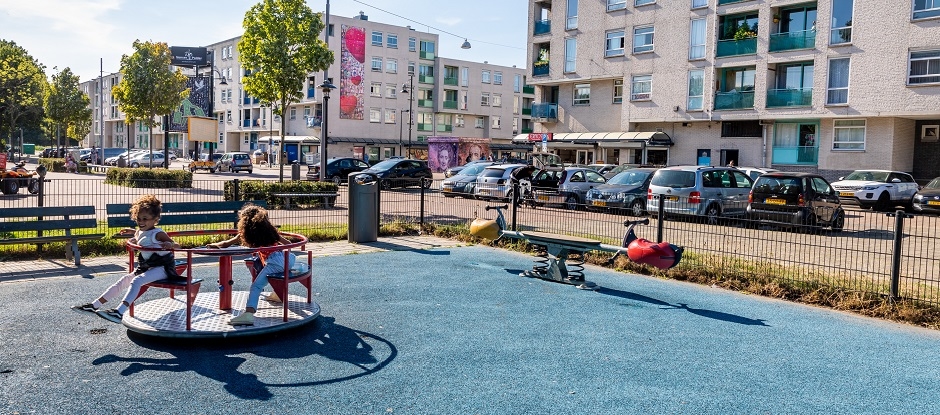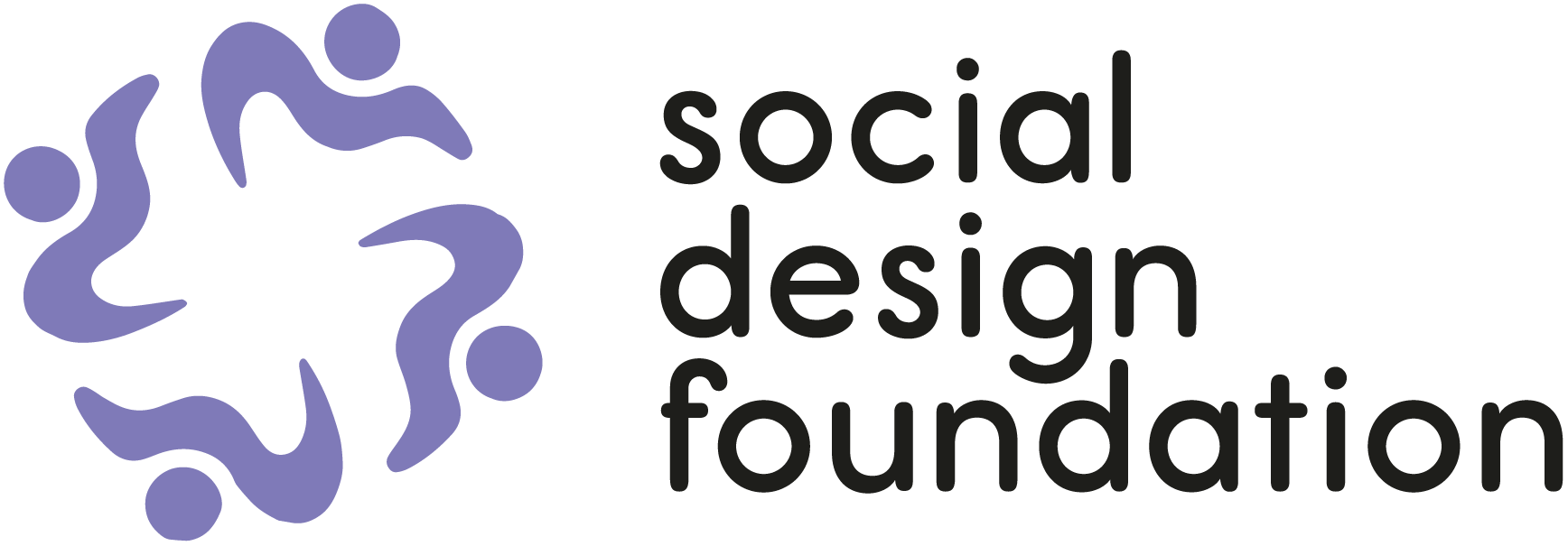Share
Related
februari 27, 2025
februari 13, 2025
januari 16, 2025
Comments
Author
E.heinhuis@lyongo.com
Share

Research inclusive living spaces
The Social Design Foundation is starting its first research project in the Netherlands on inclusive urban development, commissioned by the Municipality of Amsterdam. This research focuses on promoting social cohesion and making inclusive living spaces in the neighborhoods of Amsterdam Zuidoost.
In collaboration with the municipality and under the leadership of sociologist Professor Maurice Crul, Frans Lelie and architect Lyongo Juliana, the research ‘Praktijk van het samenleven’ explores the physical and social interventions that lead to successful coexistence in this diverse environment.
From theory to practice
This new research builds upon the Becoming a Minority (BaM) project, which started in 2019 and was funded by the European Research Council (ERC). The five-year project, led by Professor Maurice Crul, aimed to answer the question of how the concept of “integration” can be rethought in an increasingly diverse society. Crul and his colleague Frans Lelie developed the Integration in Diversity (ID) theory, which extends beyond the traditional approach to integration. This theory measures how both people with and without migration backgrounds participate in a diverse city and emphasizes the involvement of native residents in coexisting in super-diverse neighborhoods.
The findings from the BaM research show that physical space, such as the layout of residential buildings and public spaces, influences the extent to which residents interact with one another. For example, residents of central access core often develop better interethnic relationships than those living in anonymous high-rise flats.
The key insight is that social interaction does not occur automatically in a diverse city. To create an inclusive living environment, both the physical space and social interactions must be improved. This can be achieved by encouraging residents to work together on common goals, such as improving safety or managing public spaces.
Phases of the research
To create physical spaces for interaction, the Municipality of Amsterdam is looking for guidelines. For this, the Social Design Foundation is launching a follow-up study. This research will be carried out in four phases. In the first phase, several existing residential blocks in Amsterdam Zuidoost will be selected to examine the physical and social conditions that contribute to a positive or negative living climate. Surveys and interviews will identify which environmental factors promote or hinder interaction between residents.
In the second phase, the research will focus on how to improve both the physical environment and social interactions between residents. The team will use the knowledge and experience gained in previous research to develop effective solutions. These solutions will be tested in the third phase, where the effects of interventions will be measured in both existing and newly designed residential blocks. In the fourth phase, the project will be expanded to other residential blocks in Amsterdam Zuidoost and possibly other areas of the city.
A unique collaboration
What makes this research special is the unique collaboration between sociologists and architects. Maurice Crul and Lyongo Juliana combine their expertise to better understand the physical and social factors that influence coexistence in a super-diverse city. Together with Gemeente Amsterdam, they have assembled a project team to carry out the research phases.
This research responds to the growing diversity in Amsterdam and the urgent need for inclusive, social neighborhoods. Promoting cohesion and connection among residents, regardless of background, is crucial. The insights from this research can help Amsterdam and the housing corporations develop new policies and improve existing living environments. The study provides tools to strengthen social cohesion in Zuidoost and serves as a model for other neighborhoods, so that Amsterdam becomes an inclusive and future-proof city where everyone, regardless of background, can feel at home.
© Image by gemeente Amsterdam
Share
Comments
Related
februari 27, 2025
februari 13, 2025
januari 16, 2025

Research inclusive living spaces
The Social Design Foundation is starting its first research project in the Netherlands on inclusive urban development, commissioned by the Municipality of Amsterdam. This research focuses on promoting social cohesion and making inclusive living spaces in the neighborhoods of Amsterdam Zuidoost.
In collaboration with the municipality and under the leadership of sociologist Professor Maurice Crul, Frans Lelie and architect Lyongo Juliana, the research ‘Praktijk van het samenleven’ explores the physical and social interventions that lead to successful coexistence in this diverse environment.
From theory to practice
This new research builds upon the Becoming a Minority (BaM) project, which started in 2019 and was funded by the European Research Council (ERC). The five-year project, led by Professor Maurice Crul, aimed to answer the question of how the concept of “integration” can be rethought in an increasingly diverse society. Crul and his colleague Frans Lelie developed the Integration in Diversity (ID) theory, which extends beyond the traditional approach to integration. This theory measures how both people with and without migration backgrounds participate in a diverse city and emphasizes the involvement of native residents in coexisting in super-diverse neighborhoods.
The findings from the BaM research show that physical space, such as the layout of residential buildings and public spaces, influences the extent to which residents interact with one another. For example, residents of central access core often develop better interethnic relationships than those living in anonymous high-rise flats.
The key insight is that social interaction does not occur automatically in a diverse city. To create an inclusive living environment, both the physical space and social interactions must be improved. This can be achieved by encouraging residents to work together on common goals, such as improving safety or managing public spaces.
Phases of the research
To create physical spaces for interaction, the Municipality of Amsterdam is looking for guidelines. For this, the Social Design Foundation is launching a follow-up study. This research will be carried out in four phases. In the first phase, several existing residential blocks in Amsterdam Zuidoost will be selected to examine the physical and social conditions that contribute to a positive or negative living climate. Surveys and interviews will identify which environmental factors promote or hinder interaction between residents.
In the second phase, the research will focus on how to improve both the physical environment and social interactions between residents. The team will use the knowledge and experience gained in previous research to develop effective solutions. These solutions will be tested in the third phase, where the effects of interventions will be measured in both existing and newly designed residential blocks. In the fourth phase, the project will be expanded to other residential blocks in Amsterdam Zuidoost and possibly other areas of the city.
A unique collaboration
What makes this research special is the unique collaboration between sociologists and architects. Maurice Crul and Lyongo Juliana combine their expertise to better understand the physical and social factors that influence coexistence in a super-diverse city. Together with Gemeente Amsterdam, they have assembled a project team to carry out the research phases.
This research responds to the growing diversity in Amsterdam and the urgent need for inclusive, social neighborhoods. Promoting cohesion and connection among residents, regardless of background, is crucial. The insights from this research can help Amsterdam and the housing corporations develop new policies and improve existing living environments. The study provides tools to strengthen social cohesion in Zuidoost and serves as a model for other neighborhoods, so that Amsterdam becomes an inclusive and future-proof city where everyone, regardless of background, can feel at home.
© Image by gemeente Amsterdam



